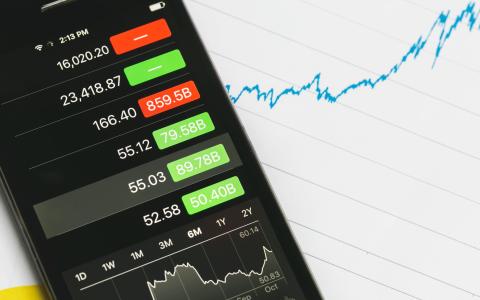
(Bloomberg) - One of the most reliable strategies in the hedge-fund world this century is also one of the simplest: Buy stocks that are entering major indexes and sell those that are exiting them. For Emmanuel Terraz, it has minted profits practically his whole career.


But something is changing, and the Frenchman’s Candriam Index Arbitrage fund — which has gained in all but four of its 19 years, including through the financial crisis and Covid — posted its worst-ever performance in 2022.
The Paris-based investor’s diagnosis: With everyone from Millennium Management to Man Group now pursuing it, the strategy that exploits the rise of passive funds and their robotic, easy-to-predict investing decisions has become so popular it’s falling apart.
“The reality is it has become a big business,” said Terraz, now the global head of equity market neutral at Candriam, a New York Life Investment Management affiliate. “You cannot have 10 multi-strategy hedge funds making 2 billion euros a year, each of them.”
Most funds don’t publish returns for individual strategies, but signs of retrenchment in the industry are growing.
ExodusPoint, which focuses overall on fixed income, has dialed back nearly all risk-taking in index rebalancing, according to a person familiar with the matter who declined to be identified discussing private plans. Managers specializing in the trade at the likes of Point72 Asset Management, Millennium, Balyasny Asset Management and Citadel have also departed this year amid deteriorating returns, Business Insider reported this month.
Index-rebalancing strategies seek to exploit a phenomenon known as the index effect, where stocks that are added to or deleted from major equity benchmarks subsequently rise or fall as passive funds with trillions of dollars in assets buy or sell to track the gauges.
The benchmark adjustments are announced in advance, providing plenty of time for an investor to make their trades before the index-tracking funds. They also follow well-known rules, making it relatively easy to anticipate likely additions and deletions even before they are announced.
The strategy was originally the domain of big banks like Goldman Sachs Group Inc., where at one point it was among the firm’s biggest revenue generators. The likes of Izzy Englander’s Millennium then edged in, followed by other multi-managers such as Balyasny. Man Group, Samson Rock Capital and proprietary trading shop Tower Research are among other famous users.
As with many hot trades that migrated from banks to the cut-throat hedge fund world, the fight to keep an edge has grown ever more ruthless. Practitioners who were able to collect large pay checks as the multi-strategy giants scooped up talent now face the flip side, as firms cut positions and even traders amid the souring performance.
Pierre-Yves Guillo is a former Millennium money manager who has founded his own multi-strategy fund, AFBI. He says he recently turned down a team trading the index-rebalancing strategy because “it has passed its prime.”
“It’s been flattening out and going down,” Guillo said of recent performance. “A number of people are going to exit, willingly or unwillingly, because it doesn’t make enough.”
The declining returns have been on display for a while. Stocks added to the S&P 500 posted an average 7.6% return in excess of the benchmark between announcement and implementation in the 1990s. That fell to 5.2% in the 2000s and 0.8% in the last decade, according to a 2022 paper by Harvard Business School Professors Robin Greenwood and Marco Sammon.
The authors argue the effect has dwindled despite the continued growth in passive investing mainly because the market has become better at anticipating inclusions and taking the other side of index fund trades.
Still, there are signs the strategy isn’t finished yet. Three of four S&P 500 additions that weren’t spinoffs this year beat the benchmark between the announcement and effective date, according to data compiled by Bloomberg News. Eleven of 14 did last year, with an average outperformance of nearly 1.9 percentage points.
Brevan Howard, the roughly $31 billion billion hedge fund in London, has started hiring for an index rebalancing team as part of its new systematic business, according to a person familiar with the matter who declined to be identified discussing private plans.
“Although a lot of the multi-strategies did cut teams, they are being picked up now,” said Toby Hill, vice president for quant research and trading at headhunter Selby Jennings. “I suspect funds are expecting the strategy to pick up again.”
Terraz began trading index rebalances straight out of university for Societe Generale SA. These days, he spends more time on the rebalancing of less mainstream indexes such as smart-beta, which run less money but are potentially less crowded.
He’s also trying to figure out how competitors are trading, of course. The hope is that enough of his rivals have been washed out for the strategy to work again. After losing 1.9% last year, the $666 million Candriam Index Arbitrage has gained 0.9% gain so far in 2023.
“Some tourists have closed up shop,” Terraz said. “We’re gradually back with people who are there for the long term.”
By Justina Lee and Nishant Kumar



